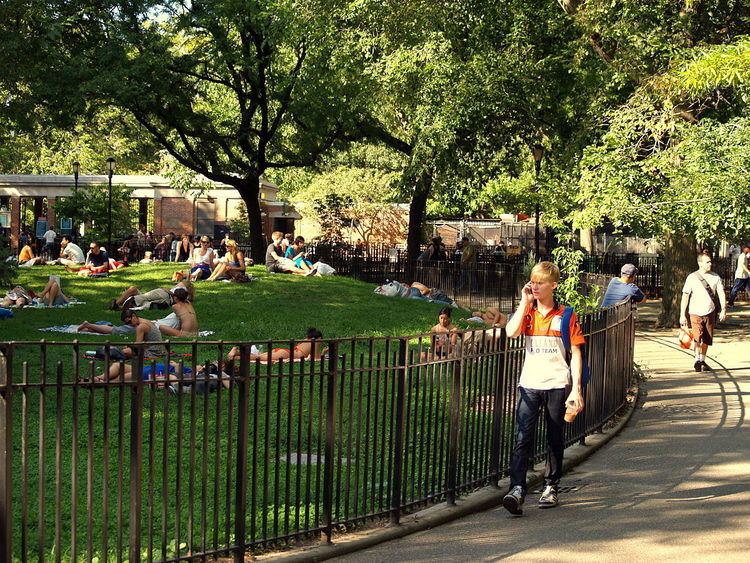Maintained by NYCDOT | Length 1.1 mi (1.8 km) Commissioned March 1811 | |
 | ||
Location | ||
Avenue A is a north-south avenue located in Manhattan, New York City, east of First Avenue and west of Avenue B. It runs from Houston Street to 14th Street, where it continues into a loop road in Stuyvesant Town, connecting to Avenue B. Below Houston Street, Avenue A continues as Essex Street.
Contents
- Map of Avenue A New York NY 10009 USA
- Sections
- Asser Levy Place
- Beekman Place
- Sutton Place and York Avenue
- Pleasant Avenue
- References
Map of Avenue A, New York, NY 10009, USA
It is considered to be the western border of Alphabet City in the East Village. It is also the western border of Tompkins Square Park.
Sections
Under the Commissioners' Plan of 1811 that established the Manhattan street grid, the avenues would begin with First Avenue on the east side and run through Twelfth Avenue in the west. East of First Avenue the plan provided four additional lettered avenues running from Avenue A eastward to Avenue D wherever they could be fitted.
While First Avenue was the easternmost avenue in most of Manhattan, several discontinuous sections were designated as Avenue A north of present-day Alphabet City.
Asser Levy Place
A short section of Avenue A was cut off from the existing section in 1947 with the construction of Stuyvesant Town and Peter Cooper Village and is now known as Asser Levy Place, on which is located the Asser Levy Recreation Center and Park, which stretches from East 23rd to 25th Streets in Kips Bay. The Recreation Center includes the Asser Levy Public Baths, built in 1904-06.
Asser Levy Place closed in October 2013 to become part of the Recreation Center The park now contains concrete Ping-Pong tables, a track and field, exercise equipment, and painted children's games such as hopscotch. It is being built by New York City Department of Parks and Recreation to replace the western end of the Robert Moses Playground at 42nd Street and FDR Drive being sold to the United Nations, in preparation for a future East River Greenway phase on the FDR Drive, underneath the United Nations headquarters between East 38th and 60th Streets.
Beekman Place
Beekman Place, located at the headquarters of the United Nations, runs as a short street between Mitchell Place/49th Street and 51st Street. Though not part of the original Avenue A in the 1811 plan, it is named after the Beekman family (members of whom include Wilhelmus Beekman, whose namesakes also include downtown's Beekman Street and William Street), who were influential in New York City's development.
Sutton Place and York Avenue
Sutton Place was also formerly designated as Avenue A; in its original length it ran between East 53rd and 92nd Streets. Effingham B. Sutton constructed a group of brownstones in 1875 between 57th and 58th Streets, and is said to have lent the street his name, though the earliest source found by The New York Times dates back to 1883. The New York City Board of Aldermen approved a petition to change the name from "Avenue A" to "Sutton Place", covering the blocks between 57th and 60th Streets.
In 1928, a one-block section of Sutton Place north of East 59th Street, and all of Avenue A north of that point, was renamed York Avenue in honor of World War One US Army Sergeant Alvin York, who won the Medal of Honor for an attack in the Meuse-Argonne Offensive on October 8, 1918. This section is the only former section of Avenue A to still use the Avenue A address system (as it only has four-digit building numbers).
Pleasant Avenue
The northernmost section of Avenue A, stretching between East 114th and 120th Streets in East Harlem, was renamed Pleasant Avenue in 1879. The addresses on Pleasant Avenue are not continuous with those on Avenue A (which would be in the 2000-series if they were continuous).
